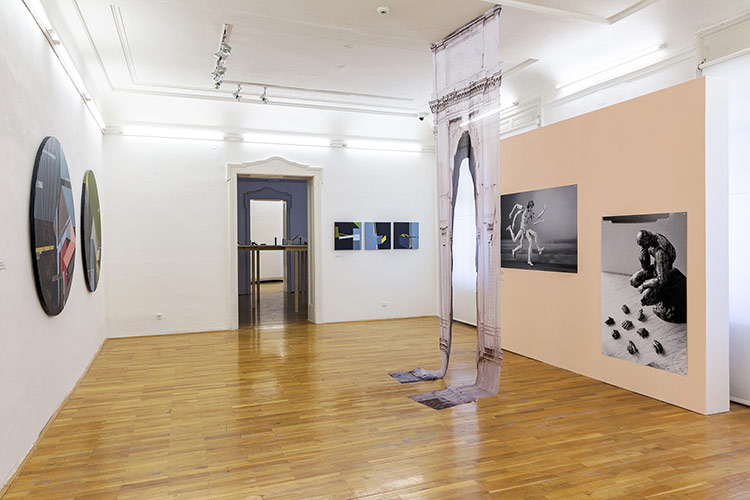International showcase of the next generation of artists of central Europe (Czech Republic, Hungary, Slovakia)
Exhibition Title: SCOOTER IV – Action of Young Art
Venue: Jan Koniarek Gallery, Koppel villa, Zelený kríček 3, Trnava
Curator: PhDr. Vladimír Beskid
Authors: Argišt Alaverdyan, APART collective, Marek Číhal, Andrej Dúbravský, Ákos Ezer, Svetlana Fialová, Julia Gryboś and Barbora Zentková, Anna Hulačová, Peter Kašpar, Ján Kekeli, Martin Kochan, Gábor Kristóf, David Krňanský, Martin Lukáč, Milan Mazúr ml., Marcell Németh, Samuel Paučo, Emília Rigová, Ottó Szábo, Lucia Sceranková, Andi Schmied, Simona Štulerová, Kata Tranker, Monika Vrancová
Duration: 13 June (Thu) – 25 August (Sun) 2019
SCOOTER IV – Action of Young Art is a periodic international event designed as a representative presentation of the emerging artists under the age of 35 from central Europe: Czechia, Slovakia and Hungary (twenty-four invited artists). Their distinctive work reflects the contemporary world through a broad spectrum of approaches and media, from actual paintings to photographs, objects, installations, to moving digital pictures. It is the organisers’ aim to create a periodic platform to present the contemporary visual language, encourage emerging artists, and celebrate gender inclusiveness in the selection of artists.
A prominent place in this exhibition is given to art that carries socio-political implications and takes a critical stance on the current status of civilisation. For instance, A. Schmied’s architectural models of a utopian city, and O. Szábo’s subtle objects of crops growing out of laid down weapons. In the second series, many pieces raise burning ecological questions and issues (the Prievidza-Nováky mining video by the APART group; the smouldering smokestacks of Slovnaft by A. Dúbravský; the clash of civilisation and nature in S. Štulerová’s stylised landscapes). E. Rigová deals with the reversal of a role of minority and majority and of metaphorical central and periphery in an innocent children’s game. The issues of the industrial culture are reflected in the polished metal reliefs by M. Németh inspired by power industry and the rusting box models by O. Szábo.
The expressive painting tendencies of contemporary figuration have a strong showing (M. Číhal, M. Lukáč, A. Ezer, A. Dúbravský). They are seconded by the fresh attitudes of elementar painting forms and geometric abstractions (A. Alaverdyan, D. Krňanský, S. Štulerová). The exhibition also features deconstructive approaches to painting (objects cut and pasted from canvas fragments by S. Paučo; presentation of industrially sprayed paintings in the “shelf” composition by G. Kristóf).
Some of the pieces deal with matters of memory and references to art history (the many-handed Thinker by L. Sceranková; re-interpretations of interwar plastic art and the surrealistic lesson in the concrete statues by A. Hulačová; “Brillo No More”, the terse reference to Warhol by G. Kristóf). Issues of intimacy and loneliness are on display in J. Kekeli’s still life photography, in the dark canvases of skulls by M. Vrancová, and in the epic slow-motion videos of M. Mazúr ml.). P. Kašpar’s interactive objects that respond to the viewer’s presence or touch also create their own distinct atmosphere. A special component consists of pieces inspired by Eastern cultures (M. Čihal’s An Audience with the Chinese Emperor; Chinese textile patterns (chinoiserie) by J. Gryboś and B. Zentková; the title of M. Mazúr’s video: Ócuka from Murakami’s Novel; the Aishiteru wood relief carvings by S. Fialová based on her residential stay in Tokyo).
The organisers of this event also plan to once again award the CYPRIÁN Prize to a selected artist; the prize is named after notable Slovak native and artist Cyprián Majerník, who spent his entire life in Prague (1909 Veľké Kostoľany – 1945 Prague).
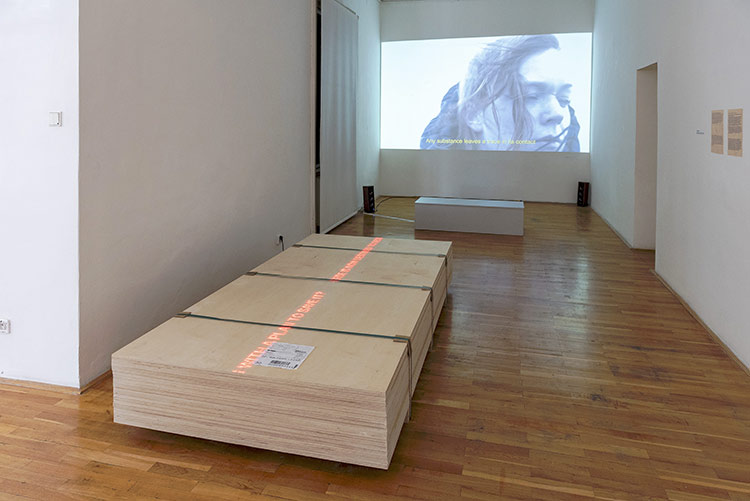
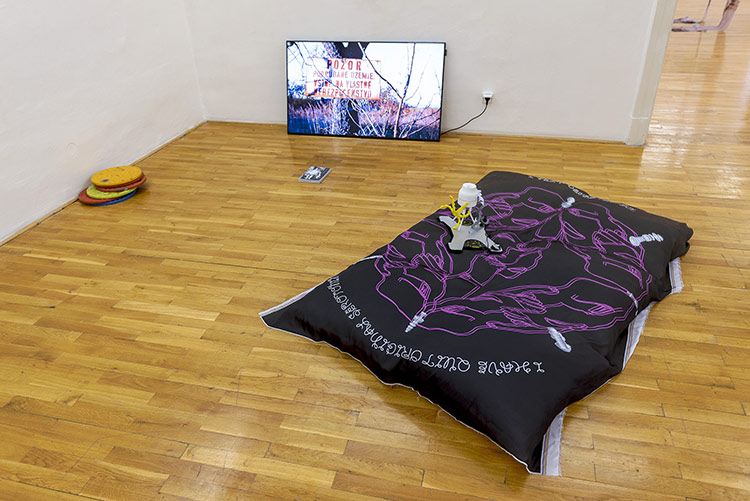
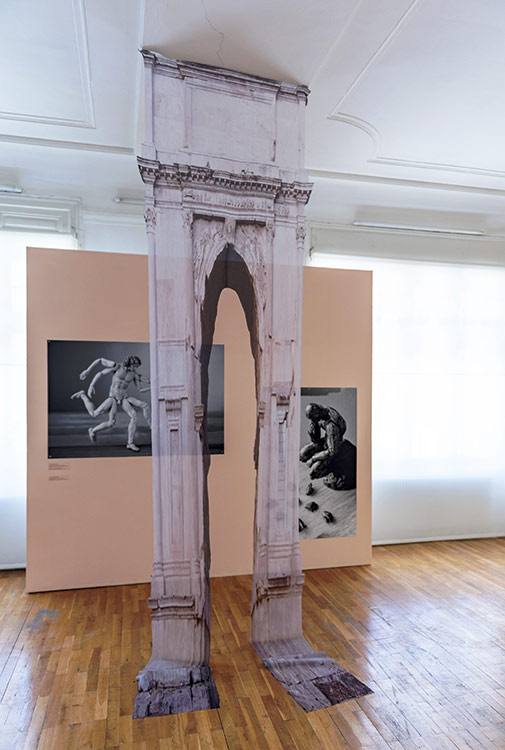
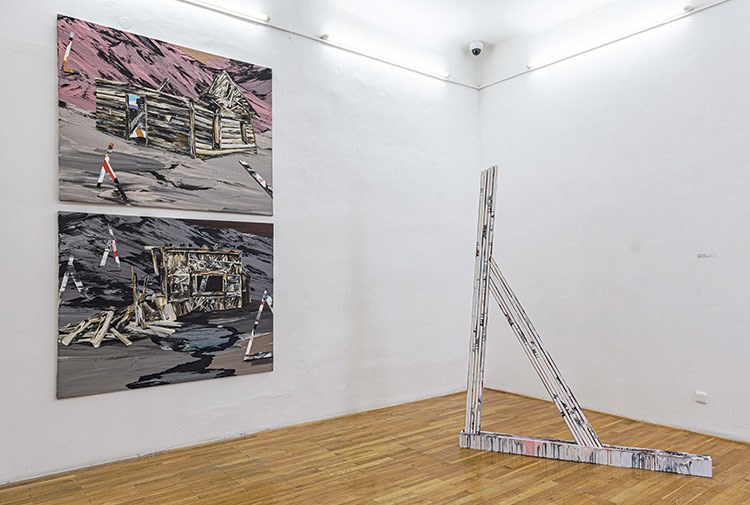
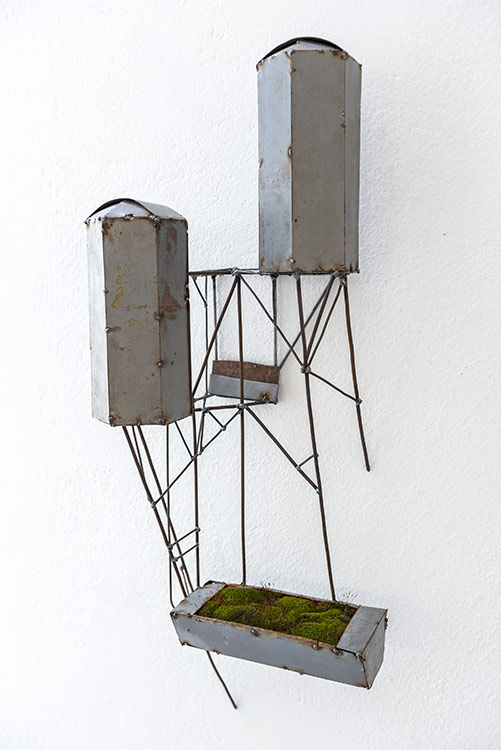
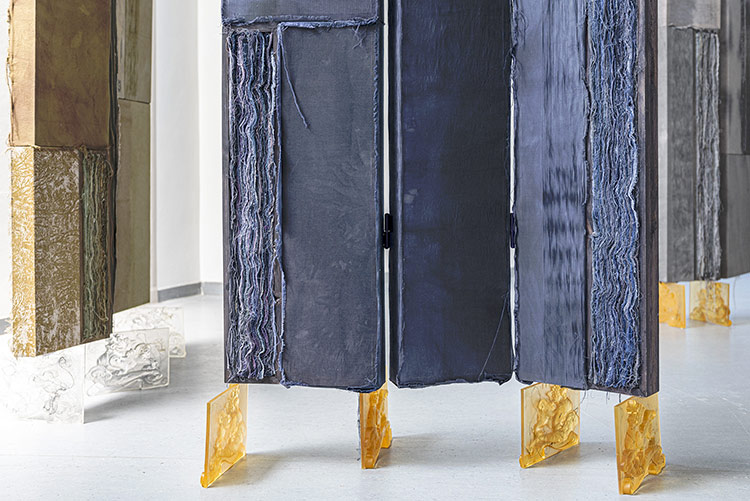
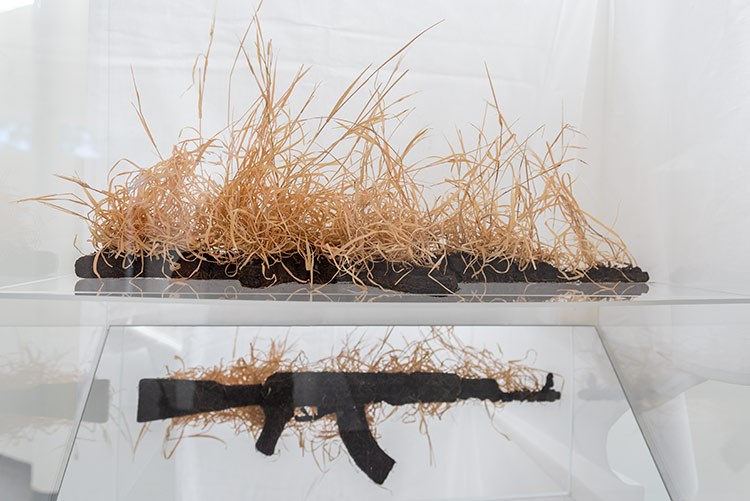
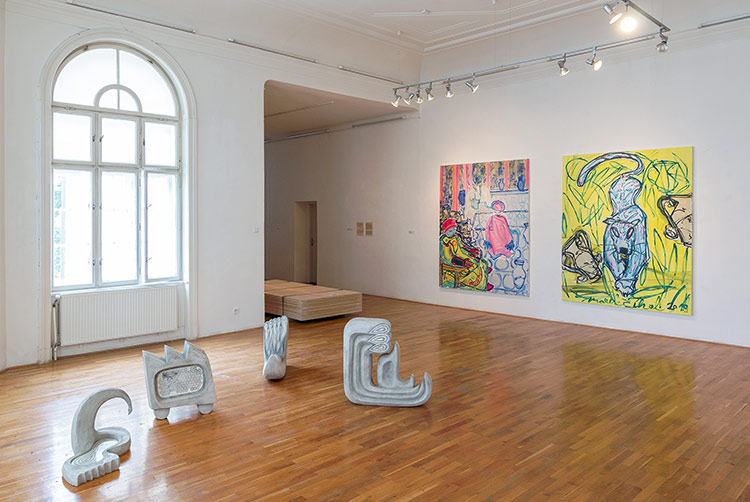
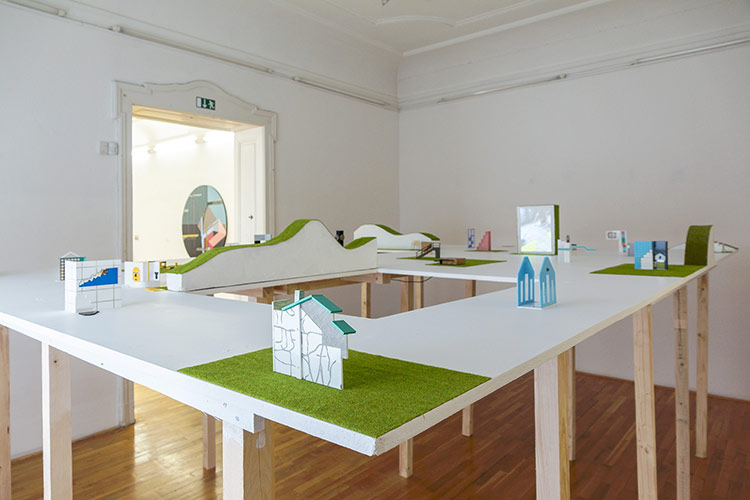
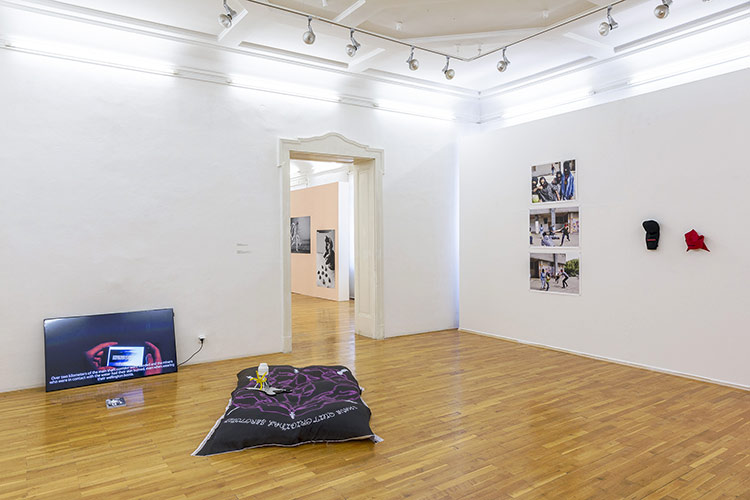
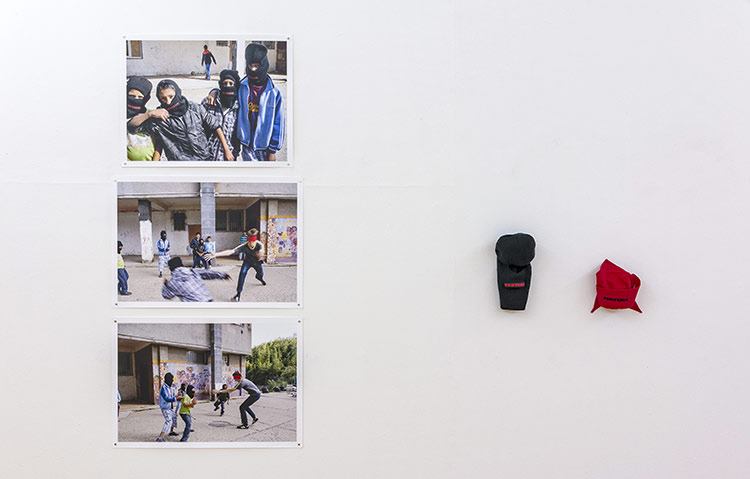
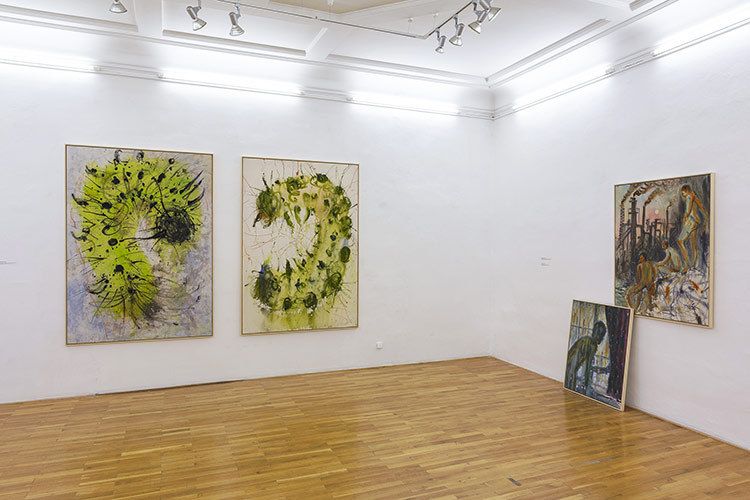
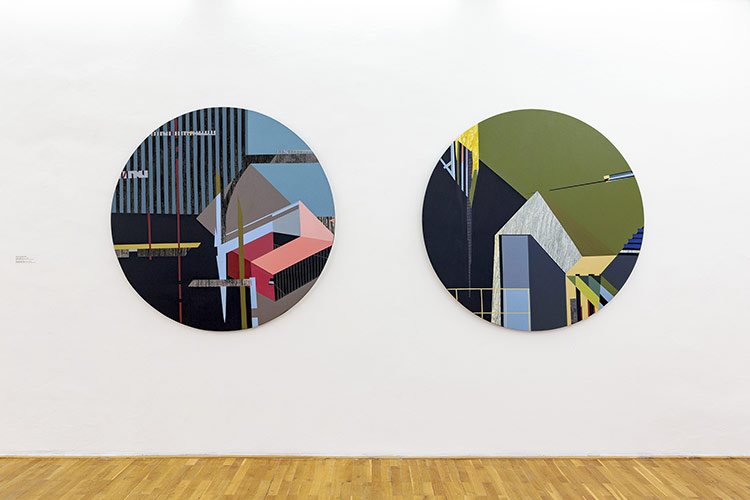
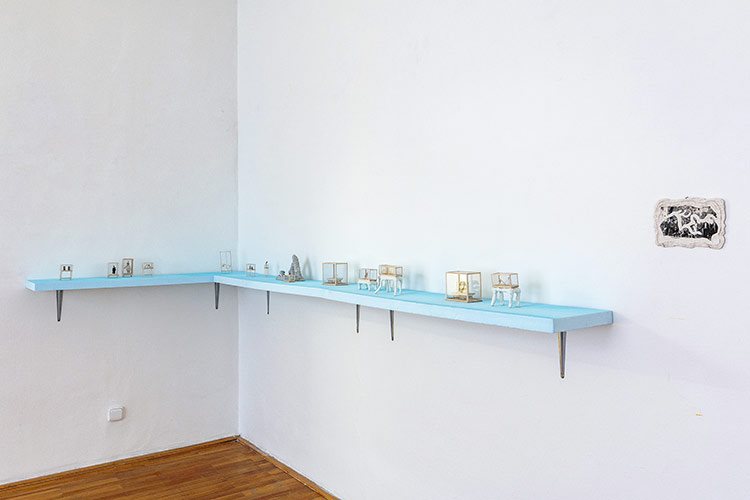
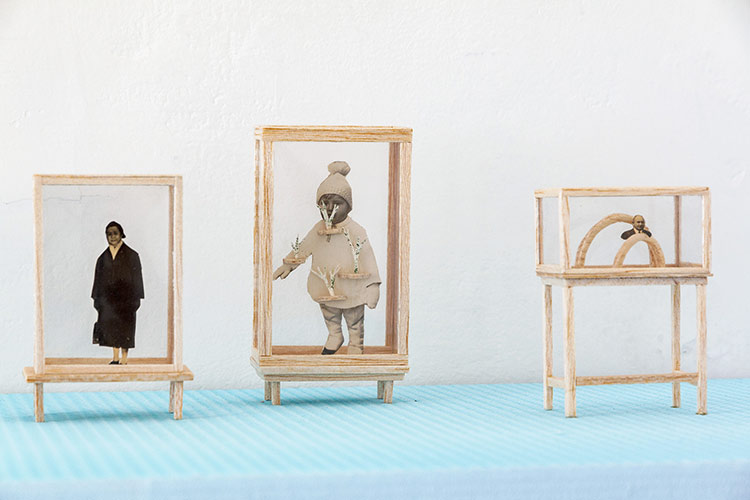
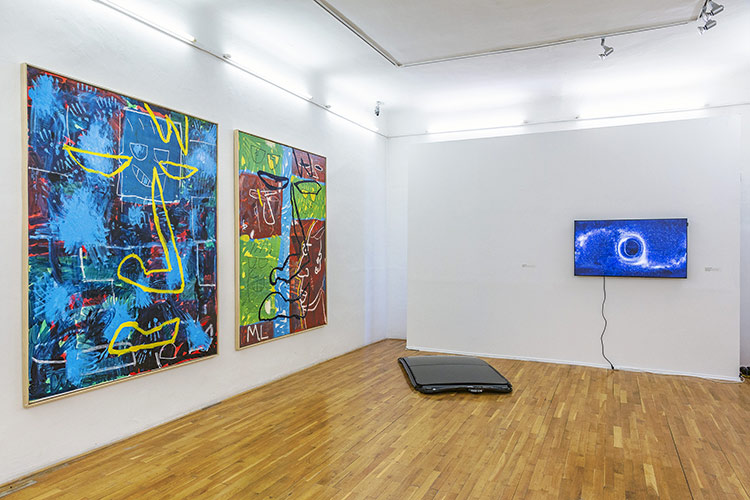

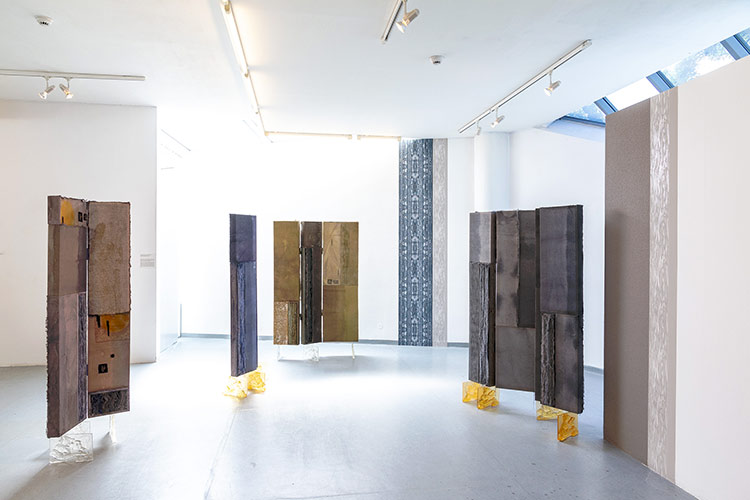
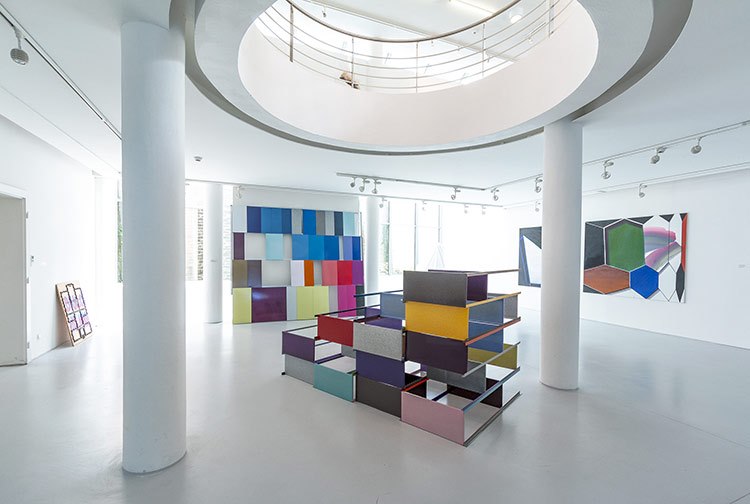
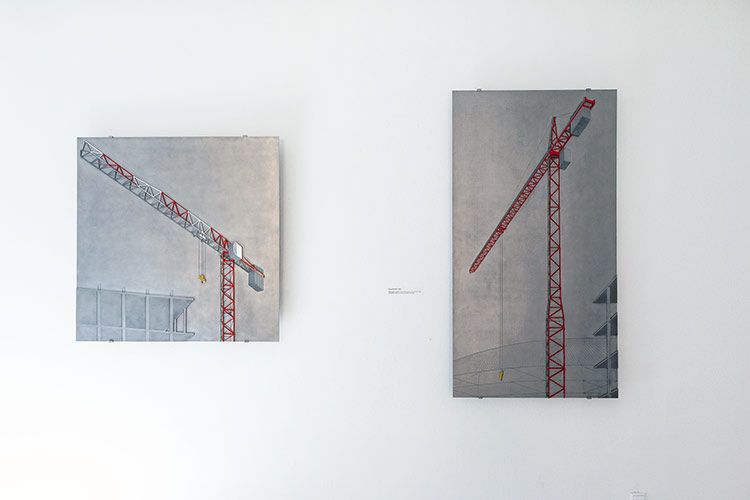
Free Space II, 2018, rezba and painting on stainless steel sheet
Free Space III, 2019, rezba and painting on stainless steel sheet
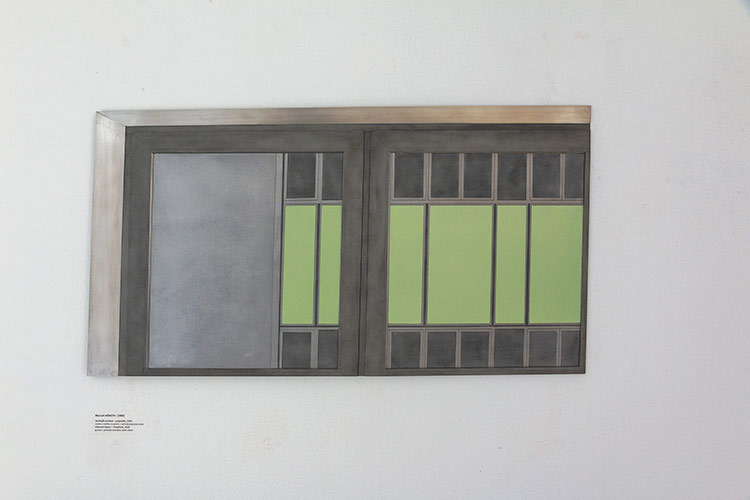
Outdoor space – foreground, 2019
Rezba and painting on stainless steel sheet
